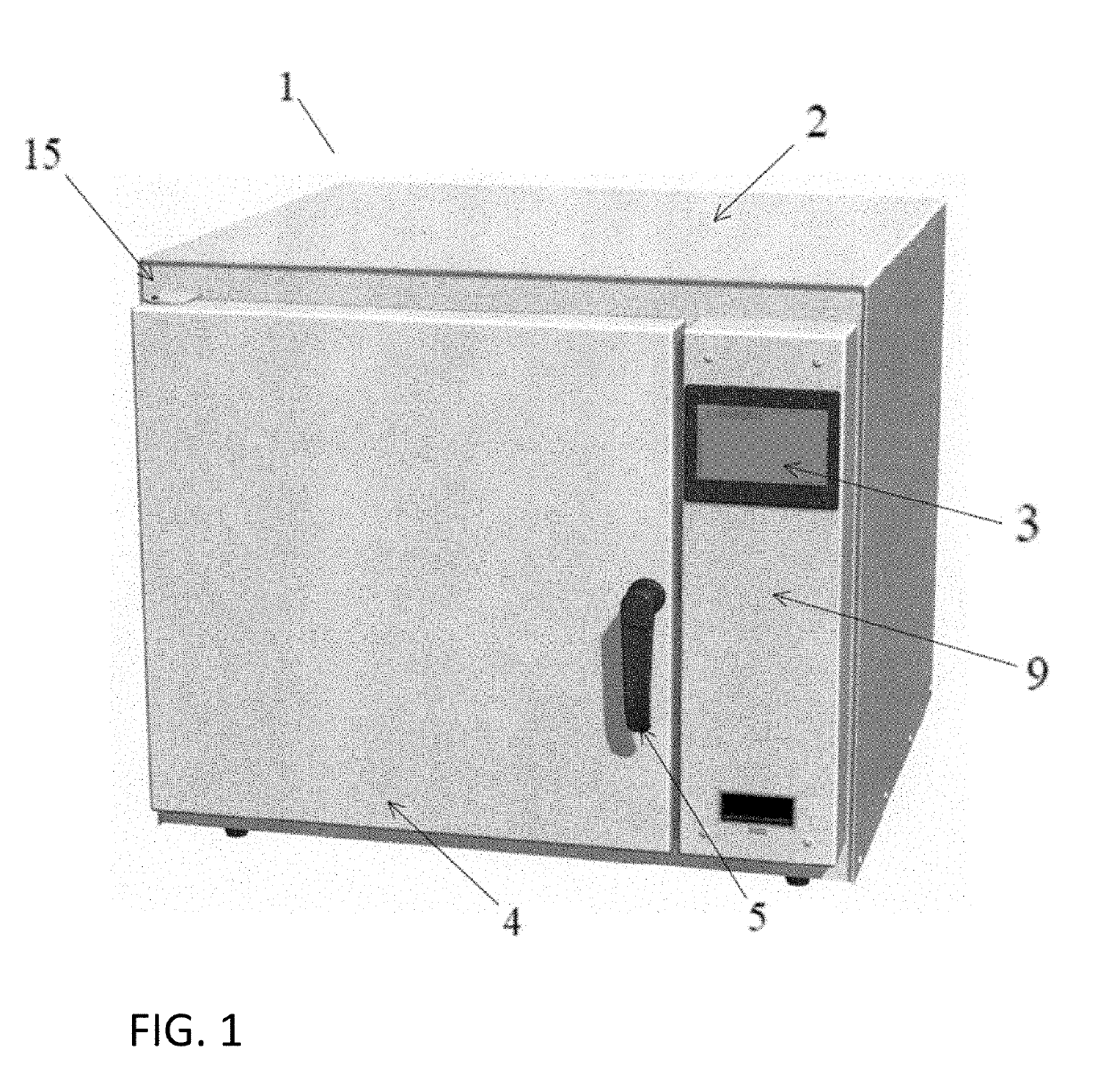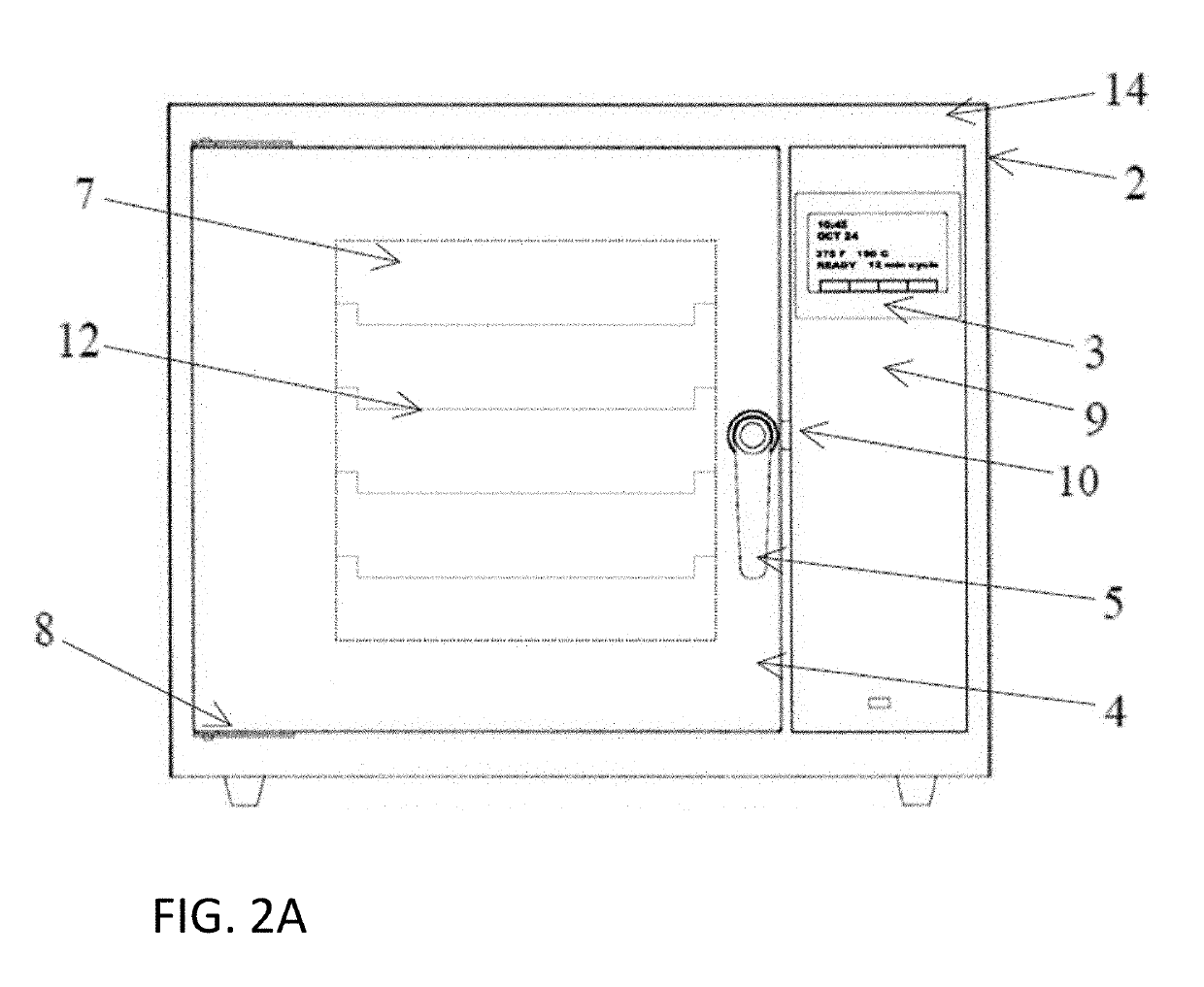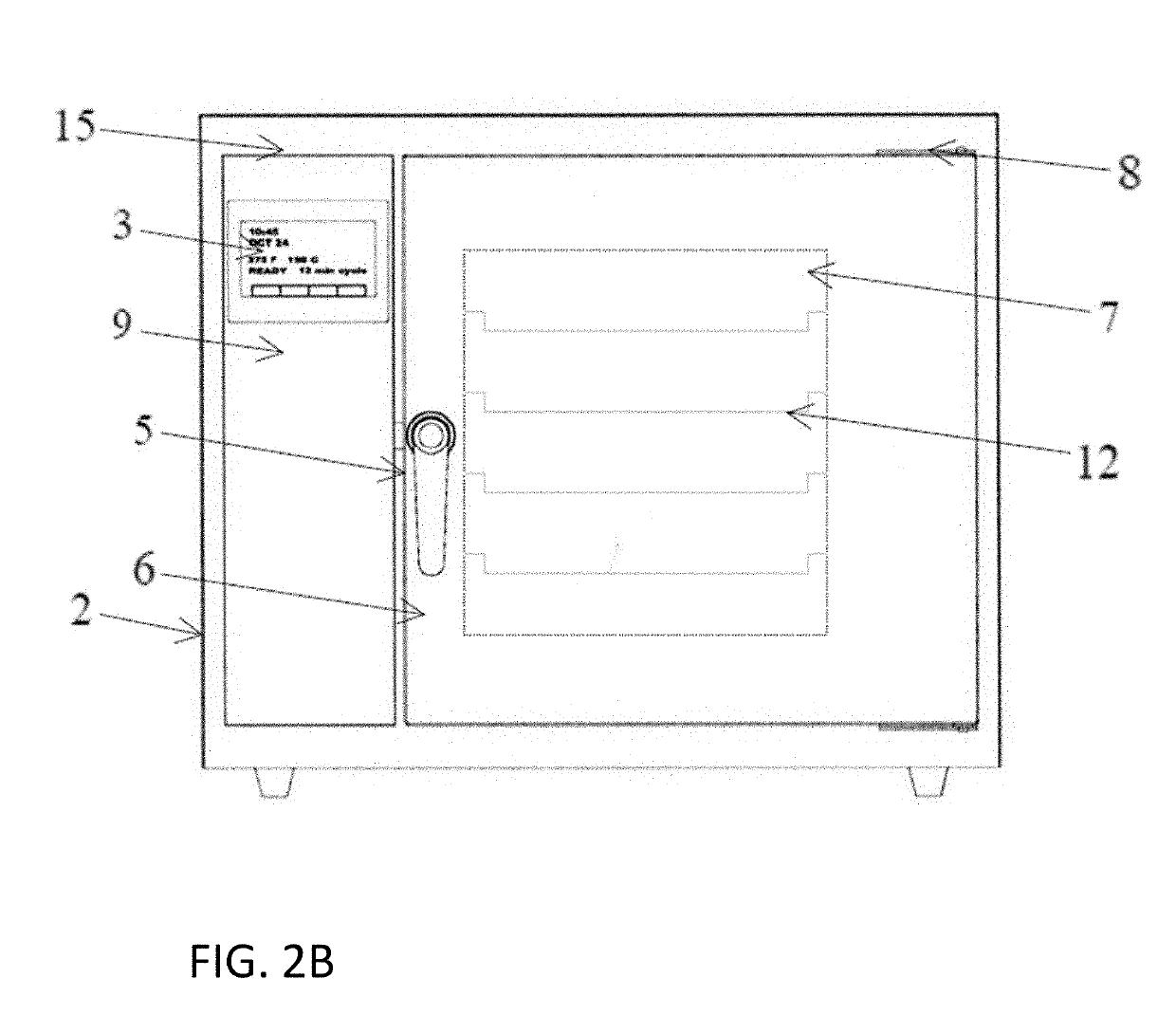Dual-pass-through countertop high velocity hot air sterilizer
a sterilizer and countertop technology, applied in the field of dry heat sterilizers, can solve the problems of insufficient microbial kill efficacies across all three dimensions of the sterilization chamber, limited application and capacity of the air handling system of the cox device, and small facilities that have neither space to accommodate nor instrument processing volume, so as to achieve the effect of maintaining thermal uniformity and microbial kill efficacies, and facilitating the use of larger instruments
- Summary
- Abstract
- Description
- Claims
- Application Information
AI Technical Summary
Benefits of technology
Problems solved by technology
Method used
Image
Examples
Embodiment Construction
[0041]The present invention is described in reference to the accompanying drawings and following embodiments that are presented for the purpose of illustration and should not be construed to limit the scope of the invention thereto.
[0042]The present invention relates to medical instrument sterilization. Particularly, a countertop high velocity hot air sterilization apparatus suitable for loading instruments and their containers into the sterilization chamber by means of an entry door and subsequent to the sterilization process removing said instruments and containers by means of a separate exit door into a sterile area of the facility to mitigate environmental contaminant exposure to the sterilized instruments and containers. The sterilization apparatus comprises a countertop housing having an entry door at a front end of a sterilization chamber and an exit door at a back end of the sterilization chamber; the chamber configured to allow non-sterile, contaminated instruments and inst...
PUM
| Property | Measurement | Unit |
|---|---|---|
| height | aaaaa | aaaaa |
| depth | aaaaa | aaaaa |
| width | aaaaa | aaaaa |
Abstract
Description
Claims
Application Information
 Login to View More
Login to View More - R&D
- Intellectual Property
- Life Sciences
- Materials
- Tech Scout
- Unparalleled Data Quality
- Higher Quality Content
- 60% Fewer Hallucinations
Browse by: Latest US Patents, China's latest patents, Technical Efficacy Thesaurus, Application Domain, Technology Topic, Popular Technical Reports.
© 2025 PatSnap. All rights reserved.Legal|Privacy policy|Modern Slavery Act Transparency Statement|Sitemap|About US| Contact US: help@patsnap.com



